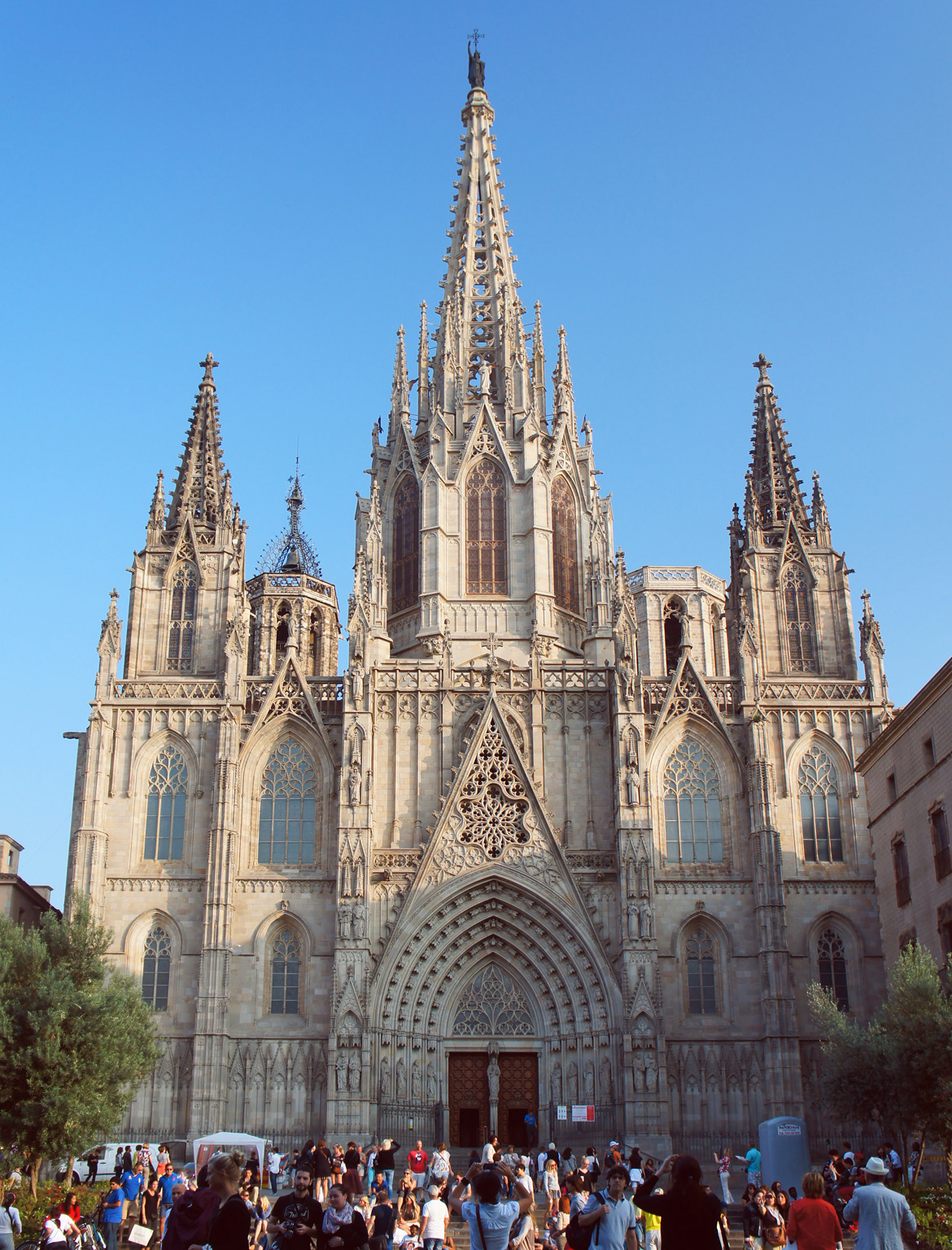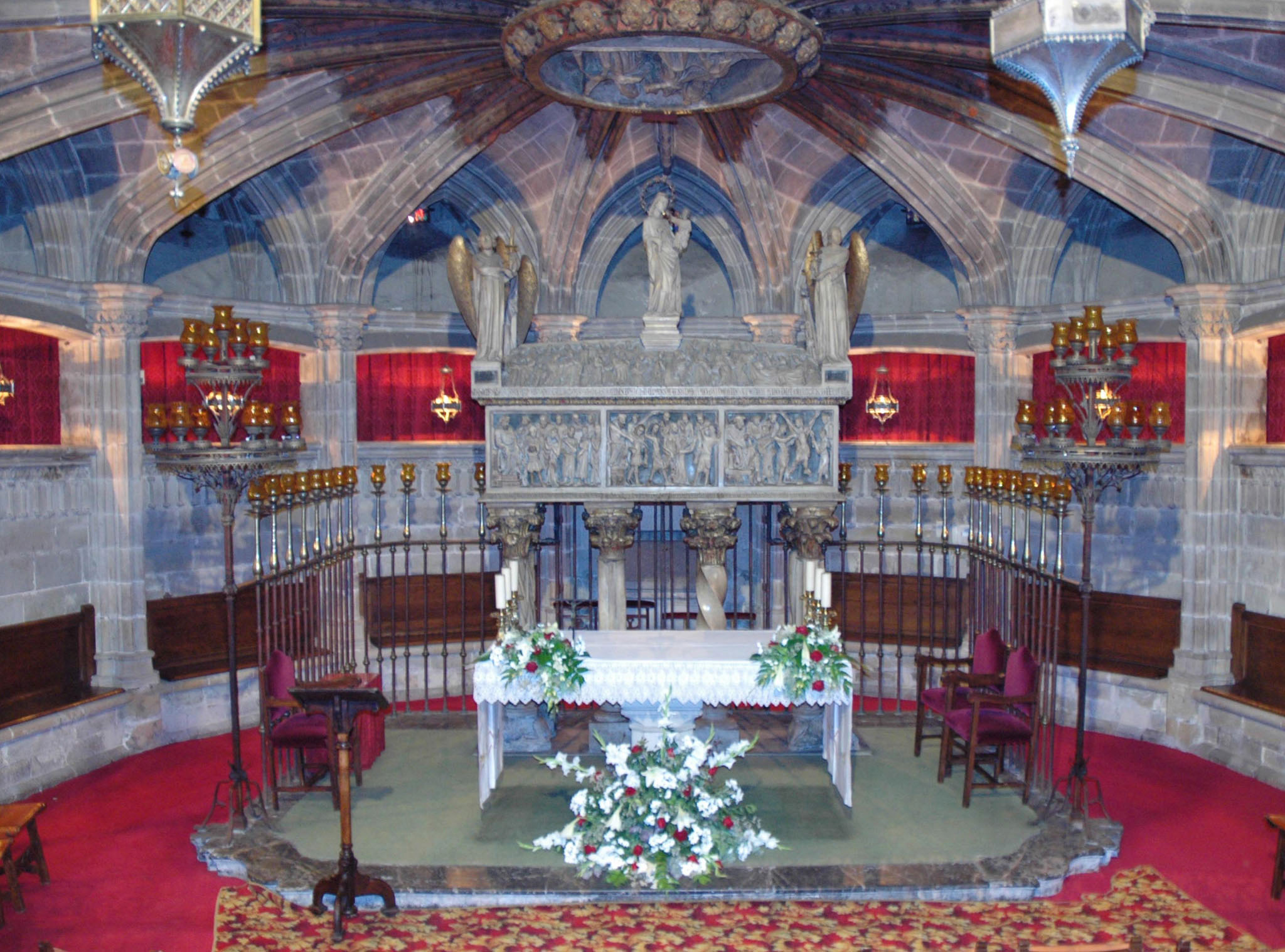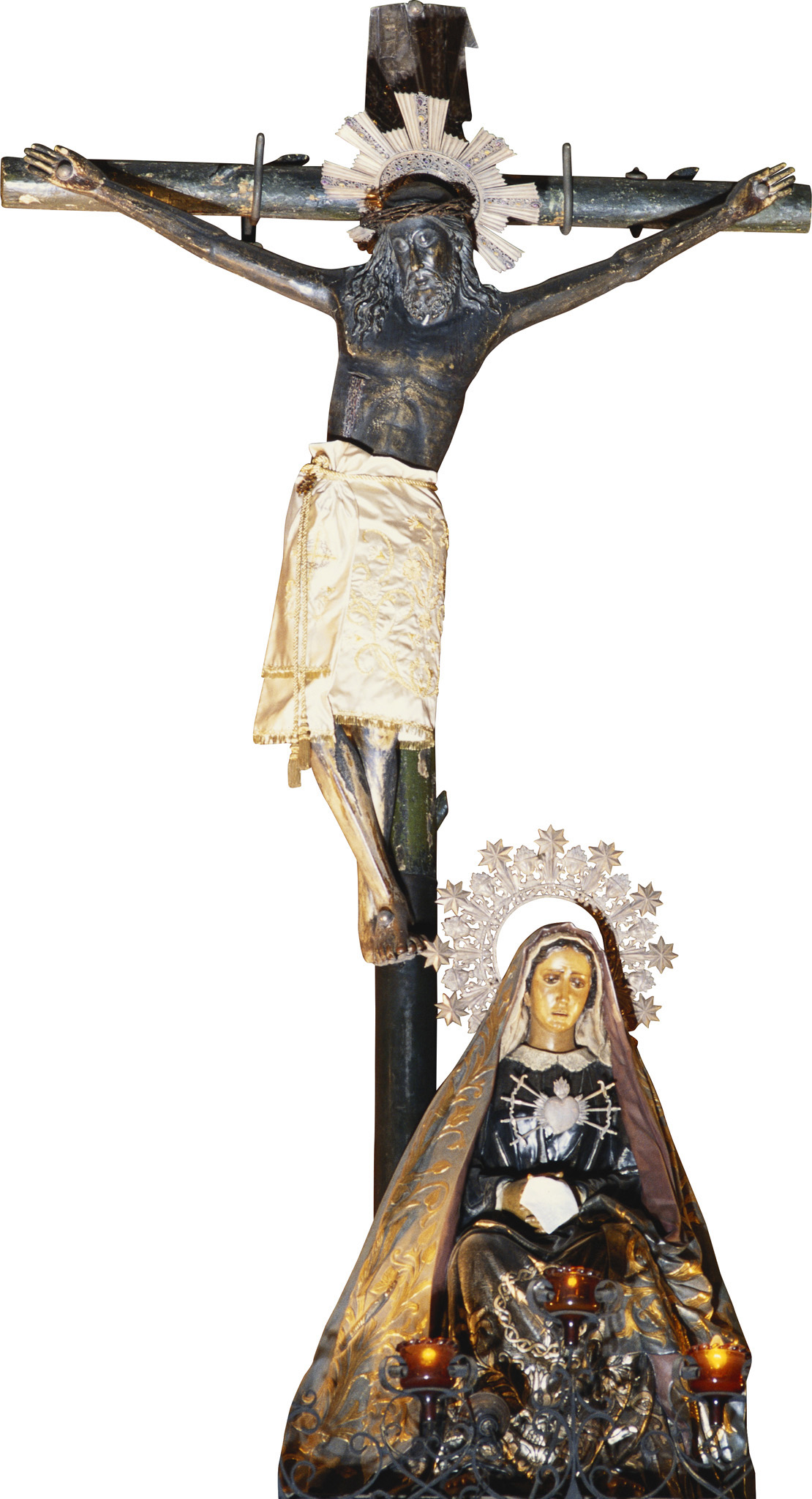
BARCELONA CATHEDRAL
From its Gothic cloister and Baroque chapels to its splendid 19th-century façade, the cathedral, dating from 1298, is an amalgam of architectural styles, each one paying homage to a period in Spain’s religious history. Records show that an early Christian baptistry was established here in the 6th century, later replaced by a Romanesque basilica in the 11th century, which gave way to the current Gothic cathedral. This living monument still functions as the Barri Gòtic’s spiritual hub.
NEED TO KNOW
![]() Cathedral: Pl de la Seu; 93 342 82 62; open 12:30–7:45pm Mon–Fri, to 5:30pm Sat, 2–5:30pm Sun; adm choir and rooftops (via elevator) $3 each, for cathedral floor and cloister $8 donation (see website for timings); www.catedralbcn.org
Cathedral: Pl de la Seu; 93 342 82 62; open 12:30–7:45pm Mon–Fri, to 5:30pm Sat, 2–5:30pm Sun; adm choir and rooftops (via elevator) $3 each, for cathedral floor and cloister $8 donation (see website for timings); www.catedralbcn.org
![]() Casa de l’Ardiaca: C/Santa Llúcia 1; open 9am–8:45pm Mon–Fri (to 1pm Sat); Jul–Aug: 9am–7:30pm Mon–Fri
Casa de l’Ardiaca: C/Santa Llúcia 1; open 9am–8:45pm Mon–Fri (to 1pm Sat); Jul–Aug: 9am–7:30pm Mon–Fri
![]() Gaudí Exhibition Center: Av de la Catedral 4; open Apr–Oct: 10am–8pm daily; Nov–Mar: 10am–6pm daily; adm $17
Gaudí Exhibition Center: Av de la Catedral 4; open Apr–Oct: 10am–8pm daily; Nov–Mar: 10am–6pm daily; adm $17
- Dress modestly to visit the cathedral (covered shoulders; no shorts).
- Choral/organ concerts are usually held monthly; inquire at the Pia Almoina.
- Watch sardanes—Catalonia’s regional dance—in Plaça de la Seu (6pm Sat, noon Sun).
Cathedral Guide
The main entrance is the main portal on Plaça de la Seu. As you enter, to the left lie a series of chapels, the organ, and elevators up to the roof. The Gaudí Exhibition Center is to the left of the main entrance; Casa de l’Ardiaca is to the right.

Cathedral Floor Plan
1. Main Façade
The 19th-century façade has the entrance, flanked by twin towers, Modernista stained-glass windows, and 100 carved angels. The restoration process took eight years and was completed in 2011.

Main Façade
2. Choirstalls
The lavish choir-stalls (1340), crowned with wooden spires, are decorated with colorful coats of arms by artist Joan de Borgonya.
3. Cloister
Graced with a fountain, palm trees, and roaming geese, the cloister dates back to the 14th century. The mossy fountain is presided over by a small iron statue of Sant Jordi—St. George.
4. Nave and Organ
The immense nave is supported by soaring Gothic buttresses, which arch over 16 chapels. The 16th-century organ looming over the interior fills the space with music during services.

Nave and Organ
5. Crypt of Santa Eulàlia
In the center of the crypt lies the graceful 1327 alabaster sarcophagus of Santa Eulàlia, Barcelona’s first patron saint. Reliefs depict her martyrdom.

Crypt of Santa Eulàlia
6. Capella de Sant Benet
Honoring Sant Benet, the patron saint of Europe, this chapel displays the 15th-century altarpiece Transfiguration of the Lord by Catalan artist Bernat Martorell (active 1427; died 1452).
7. Capella de Santa Llúcia
This lovely Romanesque chapel is dedicated to Santa Llúcia, the patron saint of eyes and vision. On her saint’s day (December 13), the blind come to pray at her chapel.
8. Capella del Santíssim Sacrament i Crist de Lepant
This 15th-century chapel features the Crist de Lepant which, legend has it, guided the Christian fleet in its 16th-century battle against the Ottoman Turks.

Capella del Santíssim Sacrament i Crist de Lepant
9. Pia Almoina and Gaudí Exhibition Center
The 11th-century Pia Almoina, once a rest house for pilgrims and the poor, houses the Gaudí Exhibition Center, where a collection of objects by Antoni Gaudí can be found.
10. Casa de l’Ardiaca
Originally built in the 12th century, the Archdeacon’s House is located near what was once the Bishop’s Gate in the city’s Roman walls. Expanded over the centuries, it now includes a lovely leafy patio with a fountain.
